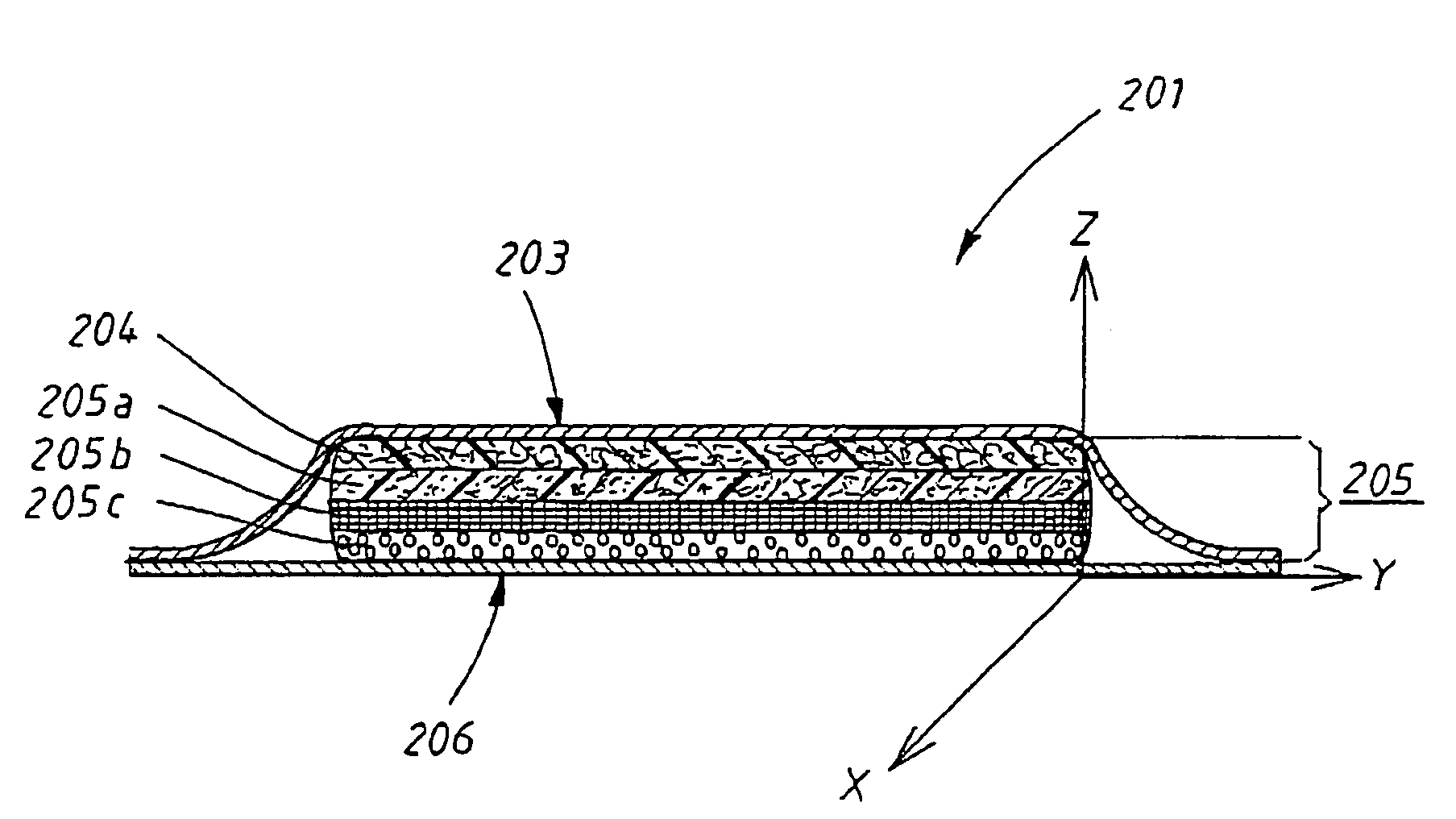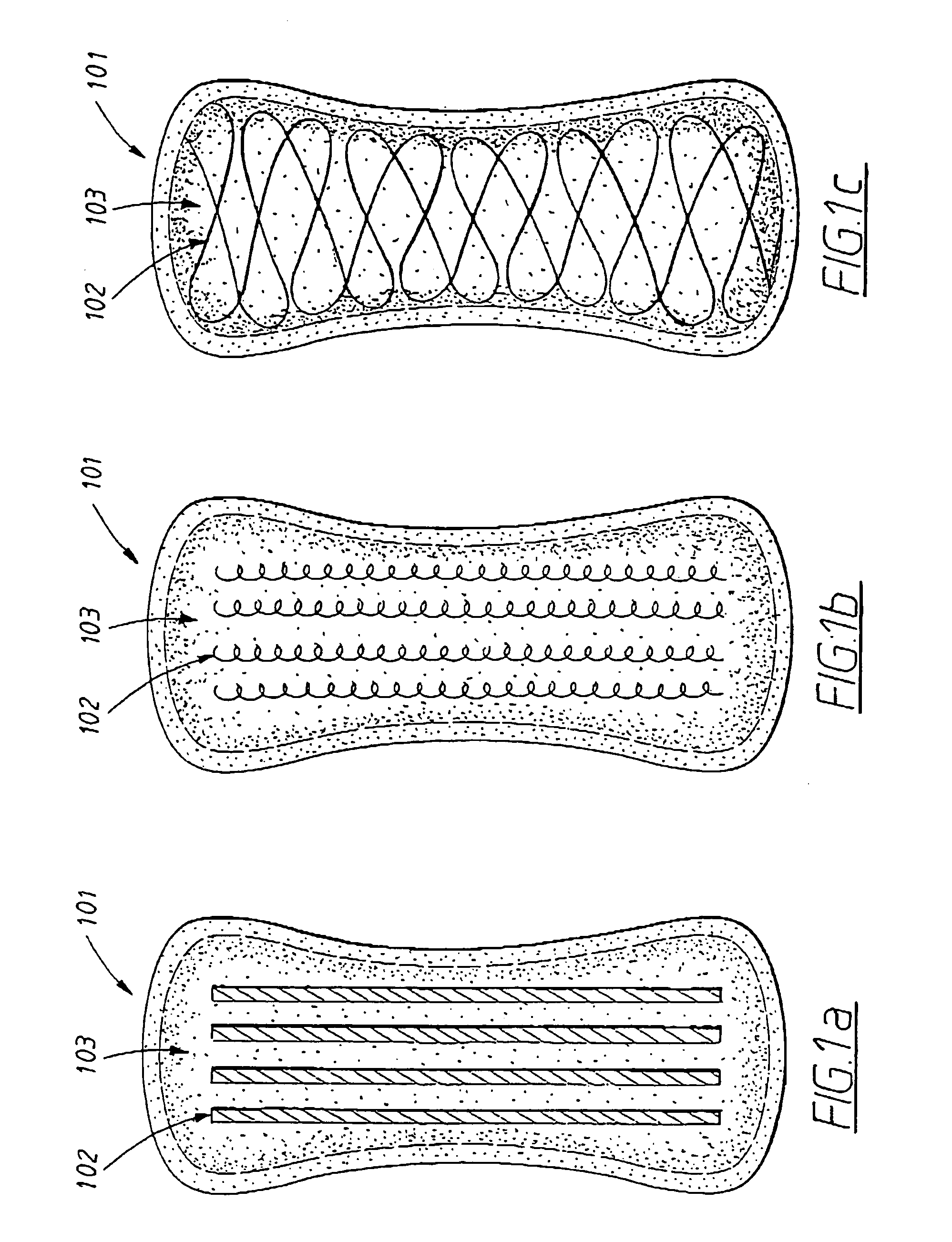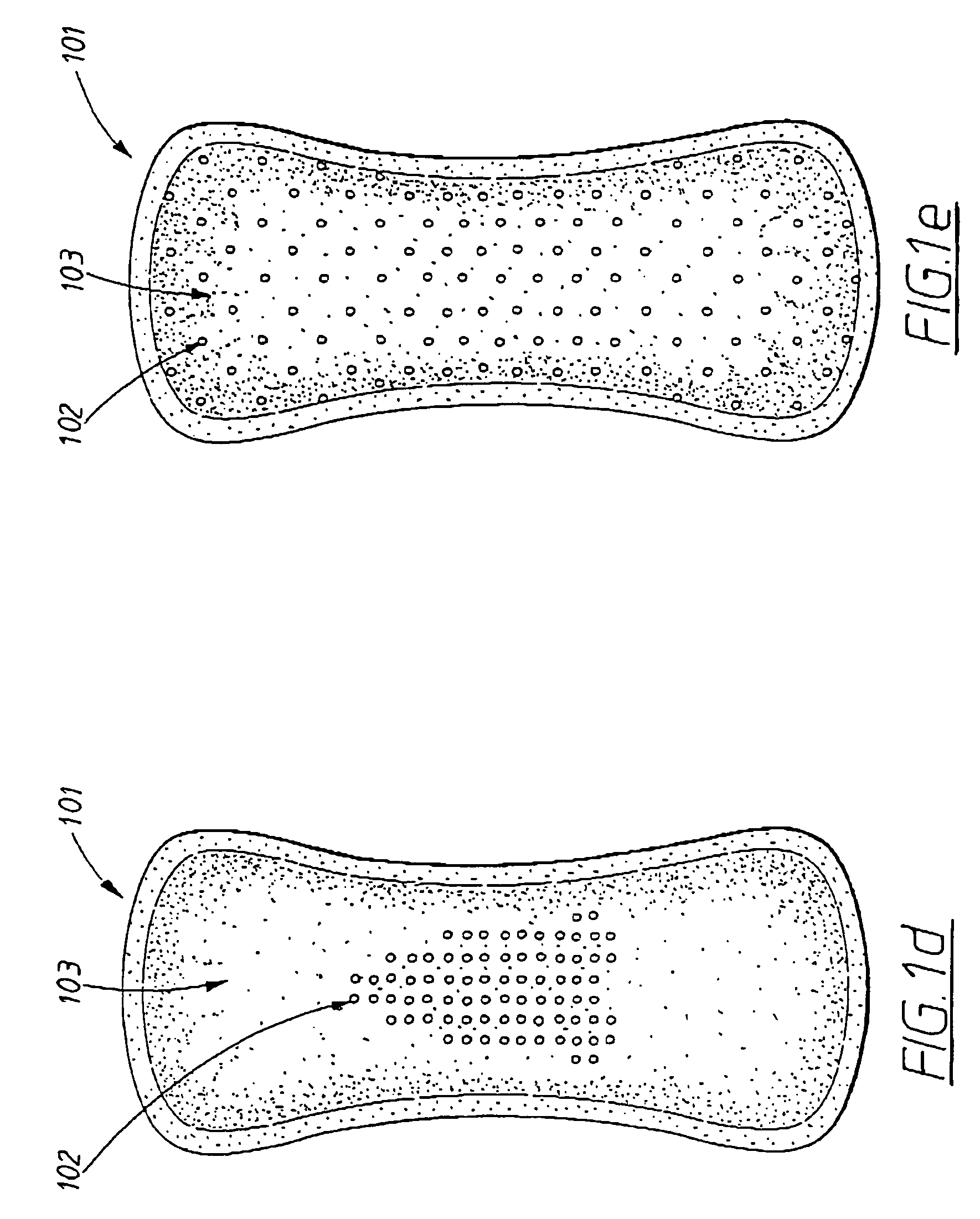Carrier for additive in an absorbent article
- Summary
- Abstract
- Description
- Claims
- Application Information
AI Technical Summary
Benefits of technology
Problems solved by technology
Method used
Image
Examples
Embodiment Construction
[0032]FIGS. 1a-g show various embodiments of how polysiloxane gel can be applied. In the illustrations, the layout of the polysiloxane gel carrier 102 is exemplified on the liquid-permeable surface layer of a sanitary towel 101. In positioning the carrier, the aim is for it to be positioned in such a way that it disrupts the absorption as little as possible at the same time as the carrier is to release its additive, or its additives, in an effective manner. The purpose of the additive plays an important role in how the polysiloxane gel is to be arranged on the absorbent article, as do the kinds of additive to be absorbed. The carrier with additive can either be applied to the surface layer before the latter is attached to the towel or be applied to the surface layer after this has been attached to the towel.
[0033]FIG. 1a shows a sanitary towel 101 with a carrier 102 in the form of four polysiloxane strands laid out on the surface layer 103. The number of strands can of course be gre...
PUM
 Login to View More
Login to View More Abstract
Description
Claims
Application Information
 Login to View More
Login to View More - R&D
- Intellectual Property
- Life Sciences
- Materials
- Tech Scout
- Unparalleled Data Quality
- Higher Quality Content
- 60% Fewer Hallucinations
Browse by: Latest US Patents, China's latest patents, Technical Efficacy Thesaurus, Application Domain, Technology Topic, Popular Technical Reports.
© 2025 PatSnap. All rights reserved.Legal|Privacy policy|Modern Slavery Act Transparency Statement|Sitemap|About US| Contact US: help@patsnap.com



